Why Honda’s early twins are some of today’s best buys
The bright red paint catches the eye and the chrome gas-tank panels shimmer. You swing a leg over the low and firm bench seat. You tap the starter button. It fires almost instantly.
It’s a Honda, after all. The engine settles into a deep putter. It’s a CB77 Super Hawk.
The 305-cc Super Hawk was Honda’s “sportbike” of the 1960s. Along with the CL77 Scrambler and CA77 Dream, the CB77 was a major part of how the company planned to own the American motorcycle market. It’s hard to imagine today, but in the mid-1950s, the Japanese motorcycle industry was barely a blip on the map. England dominated the garages of everyday riders, that country’s bikemakers offering everything from entry-level, 150-cc singles to sporting twins of 650 or 1000 cc.

In 1953, BSA was the world’s largest producer of motorcycles. American manufacturers defined the large-bore touring market with their 1200-cc Harley Panheads and Indian Chiefs, but Indian went bankrupt that same year. And in 1959, a company born only ten years earlier—founded to produce bicycle engines, of all things—became the largest motorcycle manufacturer in the world.
Honda Motor Company Limited was founded in 1948. In 1959, it opened American Honda Motor Company, its U.S. arm, in Los Angeles. The goal was not to to make limited models, or to chase horsepower wars, or to develop a cult following. Honda engineered and built motorcycles that were clean, efficient, and meant for ordinary people. One of those bikes, the Super Cub, brought inexpensive motorcycling to the masses and sealed Honda’s success. But the firm’s 305-cc twins marked the beginning of the end of the British motorcycle industry.
In 1959 Honda released a 305-cc motorcycle first known as the C76 Dream. The Dream was a revelation, a reliable and quick machine at an affordable price, yet it offered technology, like an electric starter, that wasn’t a consideration for British bikes. (The Triumph Bonneville wouldn’t get an electric start until 1980, three years before its maker went bankrupt.) In 1960, the C76 became the CA77 (known outside America as the C77). Honda introduced the CB77 Super Hawk, the sportbike of the range, in 1961. Nineteen sixty-five brought the CL77 Scrambler.
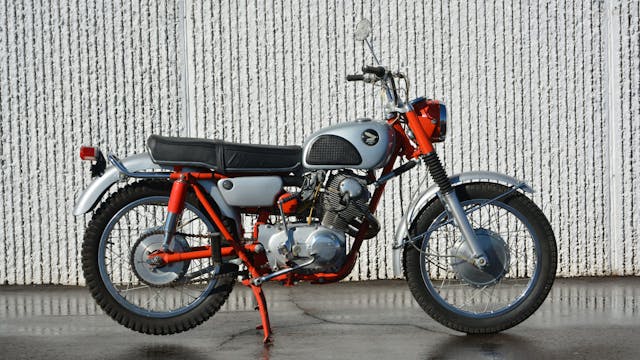
Those three models represent different experiences, and liking one doesn’t mean you’ll like the other. They all share the same parallel-twin of around 28 hp. One might not expect a 305-cc Honda to make much of a noise, but the engine has its own throaty sound that surprises many. The CA77 Dream is the “touring” model in the lineup, with its relatively upright riding position and medium-width bars, and it feels right puttering around back roads. The CL77 Scrambler is by far the loudest, with the most British-like vibrations, especially since the removable muffler is now missing on many examples. The handlebars are wide and make you want to stand up on the pegs and let the bike flow between your legs.
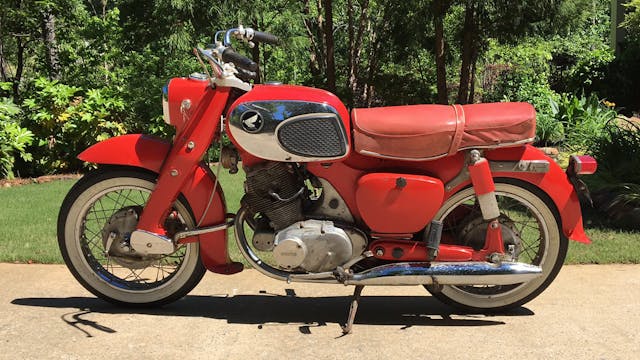
Lastly, there’s the Super Hawk. The narrow bars give fast steering inputs. The riding position is only slightly forward, but these bikes are all small beasts, and they can be cramped for many. That twin arguably provides a perfect blend of sound, between noise from gearing, from the engine’s top end, and from the ignition system. The valves and timing chain aren’t the quietest, especially after 60 years of use, but each cylinder fires with a solid thump. The 180-degree crankshaft gives the engine a distinct note while revving smoothly to 9000 rpm.
All that noise just confirms everything is working in harmony.
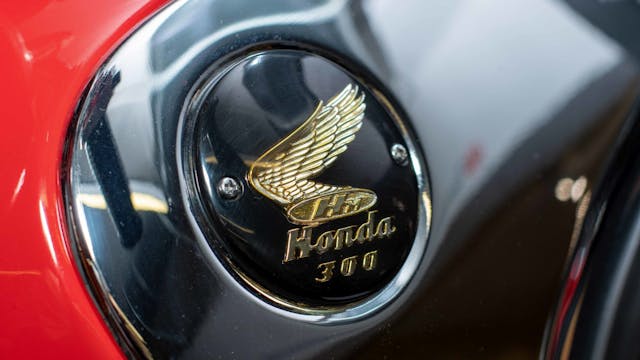
The 305s are an example of classic Honda engineering: They just work, and they work well. Fit and finish is near-perfect, and great thought was put into the little details that make the bike easy to service. Lest we forget, this is a Honda, so parts are plentiful and affordable, and the bike will require little unplanned service. (I am actually English myself and own just as many British bikes as Hondas, so none of this is personal. British and Italian bikes just have an aura about them that says, Will it start today?)
Plentiful and affordable also describes the bikes themselves. These Hondas represent strong value—you can still buy a nice example of any 305 for under $5000. Some believe the relatively low displacement makes these bikes too small or impractical for modern roads, but in reality, most classic motorcycles rarely see more than 55 mph. Rather, they are used around town for ice-cream and coffee runs and for slower back roads. In that light, the 305s are a dream, no pun intended.
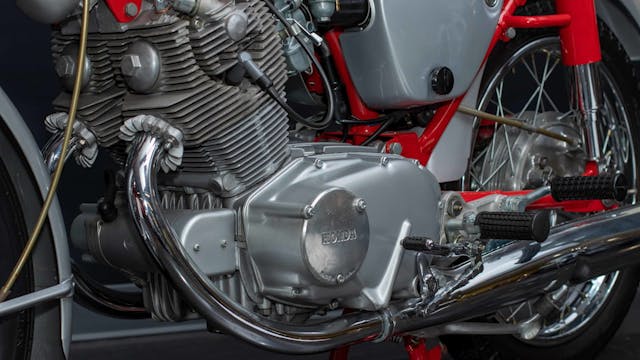
Wide availability coupled with that perceived low usability has traditionally held values back. The CA77 Dream has historically carried the lowest value and the CL77 Scrambler the highest, with the CB77 Super Hawk slotting in the middle. That pattern has recently been shifting, however, with all models rising sporadically. The CL77 has lagged slightly in this new market, possibly because it lacks the chrome and bright paint that might appeal more to online impulse buyers looking for garage candy.
1965 Honda CB77 Super Hawk #3 value: $5,400
1965 Honda CA77 Dream #3 value: $4,800
1965 Honda CL77 Scrambler #3 value: $4,800
These bikes were seen as worthless for the longest time—many owners simply chucked them in the corner of the garage rather than sell for pennies. The rise in values has led many of those examples to reappear on the market, and barn-find hunters, restorers, and flippers seem to continually find them. If you’d prefer a project, you’ll have no problem sourcing a 305 in rougher shape. Honda made around 250,000 of these twins and the engines last forever, so the market always holds plenty of suitable starting points.
Don’t be afraid of a bike that has been sitting, either. I’ve pulled more than ten 305s out of long-term storage, the bikes covered in an inch of dust. All but one required only a carb clean, a battery, and fresh gas to get running.
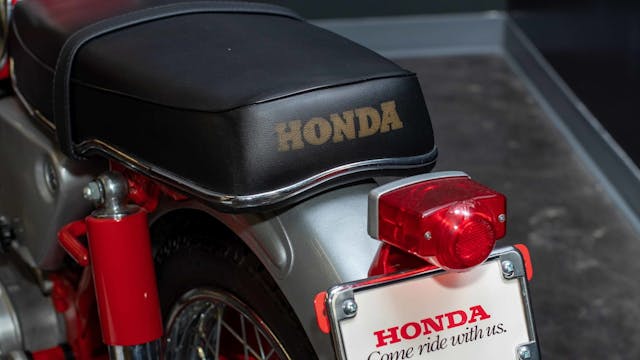
So here we have a relatively affordable 1960s bike that is reliable and trustworthy, that’s able to keep up in 50-mph traffic, that has plentiful parts availability, and that provides the unique riding experience only found with a small Honda twin. It’s hard to find another classic motorcycle that provides such joy for so little money.
Five grand for a sculpture you can take to coffee with your buddies? Why not? After all, friends and riding are what motorcycling is all about.
Check out the Hagerty Media homepage so you don’t miss a single story, or better yet, bookmark it.
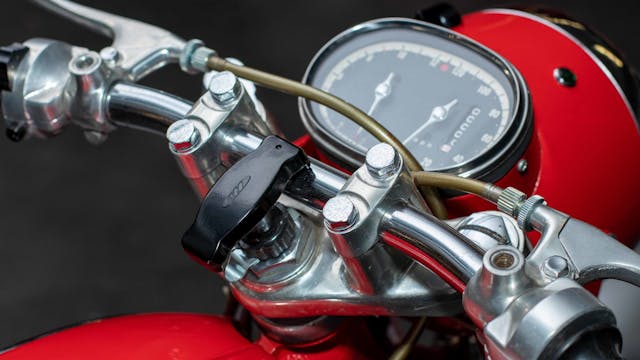


My brother had one of the 305 Super Hawks back in the day. A ’67 he bought in 1971 I believe. He painted it, rode it for 2 years, then sold it to me and I rode it from 73-75, after which I sold it when I bought my first car. I put on a set of “trumpet” pipes, and yes, it did have a glorious sound. I had no idea it only had 28 HP. That explains the difficulty it had keeping up 60mph while uphill into a headwind. Sure had lots of fun on that bike.
Dream has single carb, 360 degree crank.
Between the end of 65 I spent a few months between Vietnam and home in Okinawa where I bought my first CL 72, the predecessor of the CL 77, which was a 250 cc Honda. I quickly upgraded to the CL 77 and had tons of fun on it.cow trailing the jungle roads & dumping the bike fairly often but what the heck, a broken handle bar cost a buck fifty and a complete paint job was $20. The used CL77 was $150 at the time. On my 2nd tour in Okinawa, I believe it was about 67 , when the CB 450 came out and I got the first one to hit an island. It set me back $650. I hated the “Black Bomber” styling so I adapted the CL 77 tank, rear sissy bar & fender to it. The bike was awesome with its torsion bar valve springs vacuum, carburetors, double Link front brakes, and dual ignition . Hot Rod magazine called it “ the most sophisticated production engine bar, none.”
Over the course of two tours in Vietnam and Okinawa I had, a total of 12 Hondas and a 50 cc to Tahotsu, (may have butchered the spelling)
A little known fact about Hondas of the day was they made two ”Types”, a domestic Japanese“ Type 1”and an export model. The US got the export, “Type 2”models. The big difference was the domestic models had a crank that had both cylinders firing alternately, but the Pistons went up and down together the export models had a little known fact about Hondas of the day was they made two TYPES 1&2, a domestic and a export model the US got the export Type 2 models . The big difference was the domestic models had a crank that had both pistons rotating side by side but firing alternately, but. The export models had a crank that put the pistons 180° out from each other. The domestic models had single points & the exported models had duel points as I recall.
All were great bikes.
In the mid 60’s Honda dominated Grand Prix racing with their 4 cylinder 50cc, 125cc & 250cc GP bikes. As I recall the 50cc/4 redlined at 50,000 RPM and would do 100mph.
A mind blowing feat in the day.
Today I tool around on my custom 97 GL1500SE. With 70k on it. Had a 94GL1500 SE before but crashed it in 97 afeer putting 70k mi on it. Restored to new condition it found a new home in Sweden.
Great memories with them all, and yes never broke a bone 🙂
And if the SuperHawk shown here is all original, then we had our fenders chromed at some point. There was a local chrome shop in town that we took stuff to all the time. Go around to the back door and pound on it, some guy would take your stuff, you came back a week later with some cash and it was set to go. I’m sure the guys there were moonlighting all the stuff we took them. Our bike did not have the front fork tightening knob, so maybe that was dropped in later years. Also, you did not mention, but it’s obvious in the pics, on the Hawk (and the Dream too it looks like) the engine was a stressed frame member. Not so on the Scrambler. Also weird was the forward swinging kick-start on the Hawk. There were a few Hawks in town that we knew of, but we don’t ever recall seeing a Dream around. Probably because they’re fugly.
My brother recalls paying $290.00 for it in 1971.
My 1965 Super Hawk came with a chrome front fender. And as far as usability goes, in 1971 myself a couple of buddies rode 4,300 miles from Denver, Colorado, to San Diego, up the west coast to Oregon and back; me on the Super Hawk, them on a new Triumph 500 and a new H-D Sportster. My Honda, having been fully broken-in before the trip, had no issues, but the two new bikes had “teething” problems. Two years later I rode the same Super Hawk several thousand more miles to the Lake of the Ozarks and back. I also believe that the motorcycle in the book “Zen and the Art of Motorcycle Maintenance” was a Super Hawk ridden cross-country by the author. They were very capable bikes.
Not sure when this article was written and what area of the world your located, yet parts availability is very thin on the ground in my experience. I am a high level Canadian restorer who is just finishing up a 1966 CL77 with no expense spared. I fully rebuilt the motor with all new parts and the primary chain is NLA from almost anywhere in the world. I sourced parts for the build worldwide and said primary chain was available at considerable cost only from a few Thailand sellers on eBay. That chain is unique to this series and about to go obsolete with nothing left new anywhere. It took me a year to find the correct Keihin slide needles in the carbs as another hard to locate part.
Many of these bikes have been retrofitted with incorrect carb parts over the years like any 60 year old bike with multiple owners.
If your looking for one and they are wonderful classic Honda bikes for sure, buy the best you can afford. If not buy a complete as possible project bike as sourcing parts will be a challenge in my experience.
I did not own, but did ride, a 305 Scrambler when first introduced … seat was board flat and the hardest motorcycle seat on the market! I loved the sound and the redline (9K?) was unheard of at the time.
Honda just kept upping that redline from then on.
Loved my Super Hawk; bought it for $325 in the late 60’s and sold it a year later for $375. In between I learned that dumping the carb bowl usually solved any missing on acceleration. Must have been condensation. No other issues except the transmission case wept lightly from the small crack where I dropped it on a rock out in a field. To be young and stupid again….
That Super Hawk styling is very interesting.
Is Barn finds part of Hagerty I used to receive it and then it just stopped coming.
The early Honda Hawks are beautiful. I’ve owned a lot of bikes over the last 55 years. British, Japanese, German and Indian. But the one bike that I wish that I’d never sold was my 1972 CB 350. When I owned it as a kid, I dreamed of having a CB 750. But now that I’ve owned a few of them, I appreciate the 350. They were great little bikes.
In high school was given a 250 Dream from the neighbor. It was white. flat tires, did not run, and the carb was in box in pieces. This was 1965, at 16 and nothing other than a bicycle , for my paper route, It was a summer of learning about motors. Well, was able, lots of mistakes, rode it for 6 years. Never a fan of the color, but it took me every place. It was parked at my dads for about 10 years after that. I gave it to the neighbor kid next store
that was just me 17 years ago. Though it only had one flat tire and with the install of a new battery, it ran. Where it went to, well that was 45 years ago now. Hope it still lives.
I bought a Superhawk from a friend who had it in his basement for 20 years as a project gift for my fiancée. She was delighted and called her dad who has a farm in Illinois to tell him. He said “I think I have one of those in the barn”. Sure enough he did and it was only 200 serial no different. We now have two.
One last comment about Japanese twins. Mr. Hewitt writes a great article. But he stated that parts are available and cheap. That statement is debatable. Honda parts are very expensive. I have restored two SOHC CB750s and spent thousands on parts. The parts for 305s will probably be similarly pricey. Honda parts are more expensive than BMW or British motorcycle parts by far. While many parts will be fairly easy to find, exhaust systems will probably be very hard to source.
It’s very easy to invest far more into a classic Japanese bike than the cost of a restored one. The small chrome nuts and bolts tend to rust and replacing them really adds up. But a bike with a lot of rusty fasteners will never look good. The cheap barn finds are very tempting, but if you want a really clean bike, get the nicest one that you can find and pay the additional cost. It will probably be the best bargain.
If the CL77’s are selling for less it’s because that muffler isn’t removable, they cut them off, and a good solid exhaust can sell for as much as some bikes. All three are very usable today on the road as daily drivers. WHen they were new the speed limits on two lane roads were 70 mph. They will all do that all day long. My CL77 that I sold in 2015 would start one kick, hot or cold, and ran like a clock. The biggest limit to long rides on these bikes is the charging system as the manuals advise to keep your lights off during day riding and that is not legal anymore in many states.
Back in 1967 while a student at Chico State….I had a 305 Scrambler. I remember one night leaving college…I was challenged to a race by one of my room mates who had a 1955 Pontiac (4 door w/ V8). I had him at the second city block by about 4 car lengths…….until a cop pulled him over first, told him to wait…as he sped off and got me too. Tickets for both of us. My roomy should have known that the 305 would wind up way faster than that old “YAK” as we called it. We both should have known better.
I started with a Honda 90 which I sold to buy my first car after high school. When I got married in college, a used CL77 became our second car. I loved everything about it and it was a great ride until it was stolen. I replaced it with a CB450 which was my year round ride in Chicago. I had a love/hate relationship with the styling back then but now, the styling of that K0 Black Bomber is one of my favorites. I sold that bike after our second child as it seemed the responsible thing to do but I never got bikes out of my system. Now 50 years later at age 75 with the kids all grown, I have a “new” 1973 CL175 survivor. The styling is like a 90% sized CL77. My 175 seems like a tiny bike these days but with about 20 HP in 275 pounds, the power to weight ratio is comparable to some modern 350s… and 275 pounds is about all I’m comfortable with these days. When I saw the 175 the first time, the seller barely tapped the starter and this little 50 year old twin instantly came to life. I love old Honda twins.